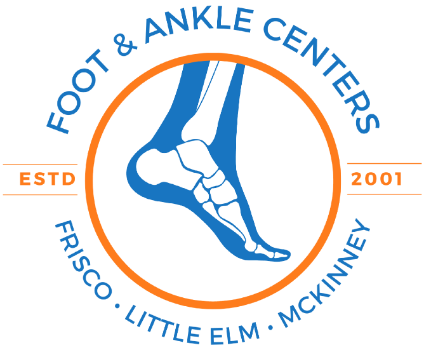Pigeon Toe Signs & Treatment in Children | Foot & Ankle Centers
Aug 4, 2025 | By: Foot & Ankle Centers of Frisco, Little Elm, McKinney
Did you know that many parents overlook a common condition affecting their children’s feet? Metatarsus Adductus, often referred to as pigeon toe, can appear in infants and young children, raising concerns about walking and mobility. Recognizing the signs early is crucial, as it often leads to simpler, more effective treatments. In this blog post, we’ll explore the signs, causes, and best treatment options to help your child walk with confidence.
Understanding Metatarsus Adductus
Metatarsus Adductus is a congenital condition where the front part of the foot turns inwards at the midfoot. This slightly altered alignment tends to appear in babies, especially during their first few months of life. While it is often a harmless condition that resolves naturally, some children may require intervention.
Signs and Symptoms to Look for
It’s essential for parents to recognize the symptoms early for effective intervention. Below are key indicators that may suggest your child's foot is turning inward:
- Curved Front of the Foot: If your baby’s foot appears to have a curved shape, this can be a classic sign of Metatarsus Adductus.
- Uneven Shoe Wear: Frequent patterns of uneven wear on shoes can indicate an inward foot posture without parents immediately realizing it.
- Walking on Outer Edges: If your child tends to walk on the outer edges of their feet rather than the entire foot, this may also suggest a foot alignment issue.
- Stiffness or Limited Foot Movement: If your child hesitates or struggles with foot movement, it can be indicative of a more severe case requiring immediate attention.
Causes of Metatarsus Adductus
While the exact cause of Metatarsus Adductus is not entirely understood, several factors could contribute to the development of this condition:
1. Position in the Womb: Some studies suggest that the position of the fetus in the womb can result in the development of this condition, especially when there’s limited amniotic fluid.
2. Genetic Factors: Family history may play a role, and children with relatives who have had similar conditions might be at higher risk.
3. Other Congenital Foot Deformities: Often, Metatarsus Adductus can accompany other foot or leg conditions, necessitating a well-rounded evaluation to determine further implications.
Diagnosis: What to Expect at Appointments at Foot & Ankle Centers
If you suspect your child may have Metatarsus Adductus, early intervention can lead to effective treatment outcomes. A typical diagnosis may involve:
- Physical Examination by a Specialist: A pediatrician or foot specialist, will examine your child’s feet, observing any mobility restrictions or deviations from the norm.
- Medical History Review: The doctor will likely ask about the child's developmental history and any relevant family details.
- Imaging Studies: In some cases, X-rays or other advanced imaging may be ordered to understand the foot’s structure. This can help rule out other potential issues and confirm the diagnosis.
Treatment Options
The good news is that many cases of Metatarsus Adductus improve with simple treatments. Here are various interventions available at Foot & Ankle Centers:
1. Observation
In infants under 6 months, doctors may recommend simply observing the condition, as many children experience natural improvement without any intervention.
2. Stretching Exercises
When exercise is indicated, a provider may suggest gentle stretching routines to help realign the feet. Parents can work with a physical therapist to learn proper techniques. These exercises aim to improve flexibility and reduce stiffness in the foot muscles.
3. Special Shoes or Orthotics
In some cases, custom orthopedic shoes or inserts may be suggested to encourage proper alignment and mobility. Parents should follow a specialist's recommendations closely to ensure the best outcomes.
4. Casting or Bracing
If the condition is more severe, casting or bracing may be considered. In these cases, a specially designed brace is used to hold the foot in proper alignment over time. This isn't typically observed until the child is older, as it is more effective once they are actively walking.
5. Surgery
In uncommon instances where other interventions are unsuccessful, a surgical option can help realign the bones of the foot. This is usually a last resort and requires careful evaluation by a foot specialist.
The Importance of Early Checkups
Regular pediatric checkups at Foot & Ankle Centers are vital for early detection of common conditions like Metatarsus Adductus. Parents should feel empowered to discuss any concerns with their pediatricians or foot specialists, ensuring that any signs of foot issues are addressed promptly.
Moving Forward with Confidence
Understanding Metatarsus Adductus can empower parents to recognize early signs and pursue appropriate treatment options. The progression of this condition varies from child to child, and what remains consistent is the importance of consistent monitoring and intervention as needed.
By being proactive and addressing concerns early on with Foot & Ankle Centers, parents can help their children achieve optimal mobility without unnecessary complications.
Where Do We Go from Here?
In summary, parents should stay alert to their child’s foot development. If you notice their foot turning inward or other related symptoms, it’s important to consult a specialist. In many cases, simple treatments such as stretching, supportive footwear, or custom orthotics may be all that’s needed.
Dr. Knapp, Dr. Tavakoli, and Dr. Treleven at Foot & Ankle Centers in Frisco, Little Elm, and McKinney provide expert, compassionate care to help your child grow with strong, properly aligned feet. By staying informed and proactive, you’re taking an essential step toward your child’s lifelong foot health.


Leave a comment
0 Comments